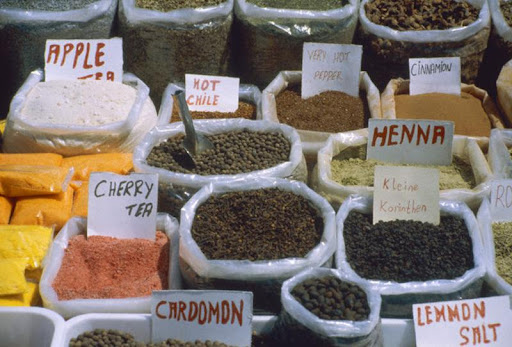Sunday, February 13, 2011
World production shortfall pushes prices of pepper to new heights in Malaysia
 Pepper Board director-general Grunsin Ayom said that based on International Pepper Community's (IPC) forecast, world production would dip by about 2 per cent to 309,952 tonnes this year compared to an estimated 316,380 tonnes (251,980 tonnes for black and 64,400 tonnes for white) harvested by more than a dozen producing countries in 2010.
Pepper Board director-general Grunsin Ayom said that based on International Pepper Community's (IPC) forecast, world production would dip by about 2 per cent to 309,952 tonnes this year compared to an estimated 316,380 tonnes (251,980 tonnes for black and 64,400 tonnes for white) harvested by more than a dozen producing countries in 2010.
"The IPC has projected a global shortfall of nearly 45,000 tonnes in 2011 compared to 53,000 tonnes last year,'' he said.
Last year's world production dropped by 0.71 per cent to an estimated 316,380 tonnes, down from 318,662 tonnes in 2009.
Grunsin said the new crop from Brazil, the world's fourth biggest producer, that came into the market three months ago, was lower than expected as the unfavourable weather had affected production.
This, he said, had put a squeeze on the tight supply situation.
Grunsin said Malaysian black and white pepper closed at their highest price levels of RM12,100 (US$3,963) per tonne and RM19,500 per tonne in 2010 against RM9,350 per tonne and RM15,300 per tonne in 2009 or an increase of nearly 30 per cent and 27 per cent respectively.
"It is highly possible for white pepper prices to break the RM20,000 per tonne mark this year. The prices for both black and white will remain firm in the next one to two years.
"Farmers are more secured financially and this enables them to hold on to their stocks for better prices.
"However, we can expect seasonal price movements when the major producing countries harvest their new crops. Other factors that will affect the prices are the strength of the US dollar and recovery of the world economy,'' he added.
Grunsin said the abnormally wet weather had caused the delay in crop harvest in most countries, including Malaysia.
Vietnam, the world's No. 1 producer, is expected to start harvesting its new crop next month. It is expected to produce some 100,000 tonnes, or more than 30 per cent of the world's production this year.
According to IPC's 2011 projection, India is expected to produce 48,000 tonnes, followed by Indonesia (37,000 tonnes), Brazil (35,000 tonnes), Malaysia (25,672 tonnes), China (23,300 tonnes), Sri Lanka (17,102 tonnes) and Thailand (9,750 tonnes).
"Internal consumption of producing countries is projected at 125,202 tonnes, leaving 229,710 tonnes for export,'' said Grunsin.
Reviewing the performance of the Malaysian pepper industry in 2010, he said production rose to an estimated 24,227 tonnes, up from 21,915 tonnes in 2009. Domestic consumption shot up by 5 per cent to an estimated 6,350 tonnes (6,050 tonnes in 2009).
He said Malaysia exported about 14,040 tonnes of pepper worth RM190mil last year compared to 13,122 tonnes valued at RM156mil in 2009.
Japan was Malaysia's largest buyer, absorbing an estimated 3,400 tonnes worth RM55mil, followed by China (1,850 tonnes) and Singapore (1,723 tonnes), Other main buyers are from European countries and the United States.
Pepper is a smallholder crop and there are now some 14,170ha of pepper farms in the country, of which 14,000ha are in Sarawak. There are some 110ha in Johor and more than 10ha in Sabah. With government assistance, pepper planting has been introduced in Perak and Kedah.
Grunsin said that as domestic consumption had gone up steadily over the years, Malaysia might only export 50 per cent of its production by 2020.
He said the industrial sector had increased pepper usage, such as for meat coatings, and in the production of pepper products such as black pepper sauce, for both the domestic and export markets.

This post was written by: HaMienHoang (admin)
Click on PayPal buttons below to donate money to HaMienHoang:
Follow HaMienHoang on Twitter













0 Responses to “World production shortfall pushes prices of pepper to new heights in Malaysia”
Post a Comment